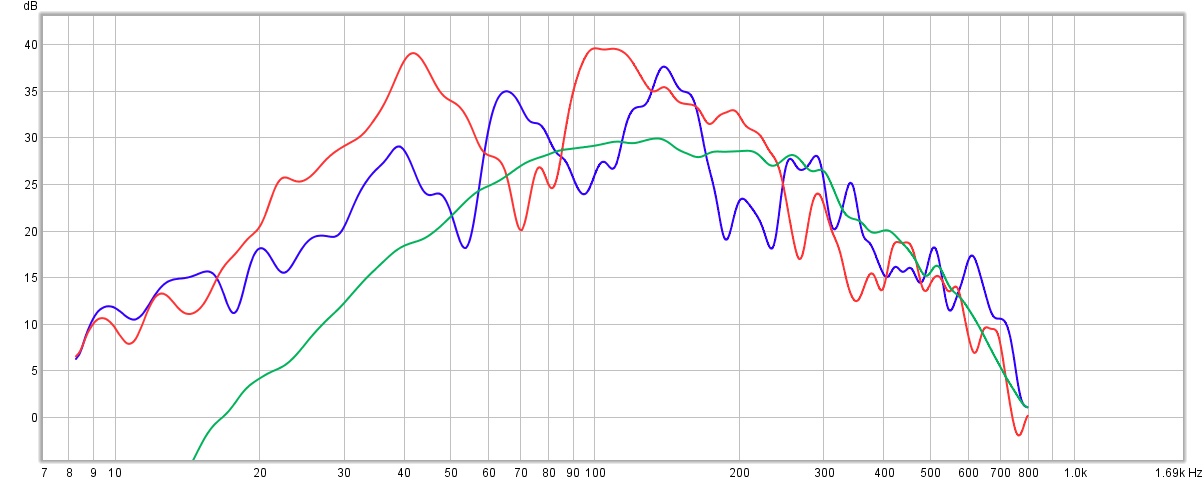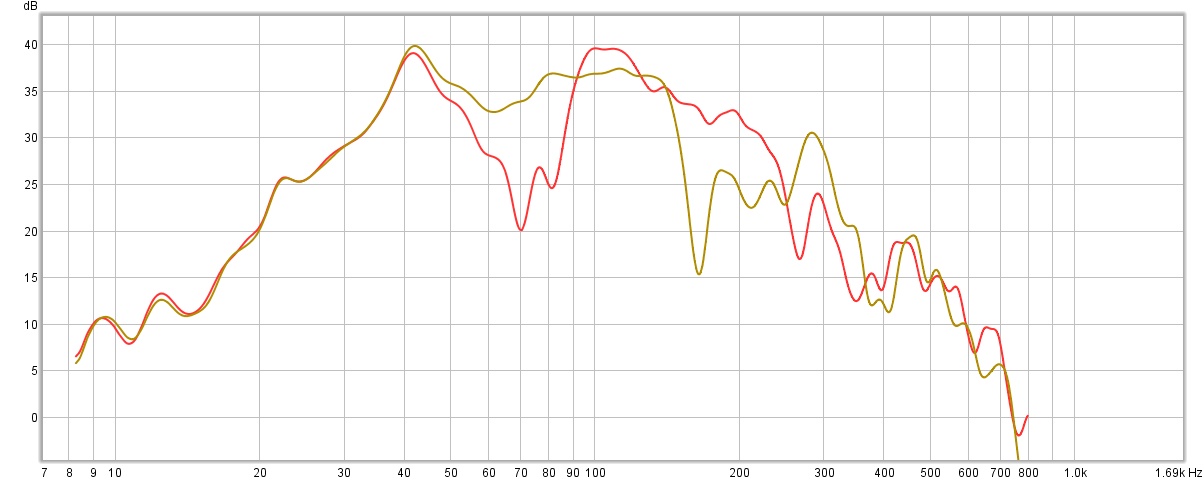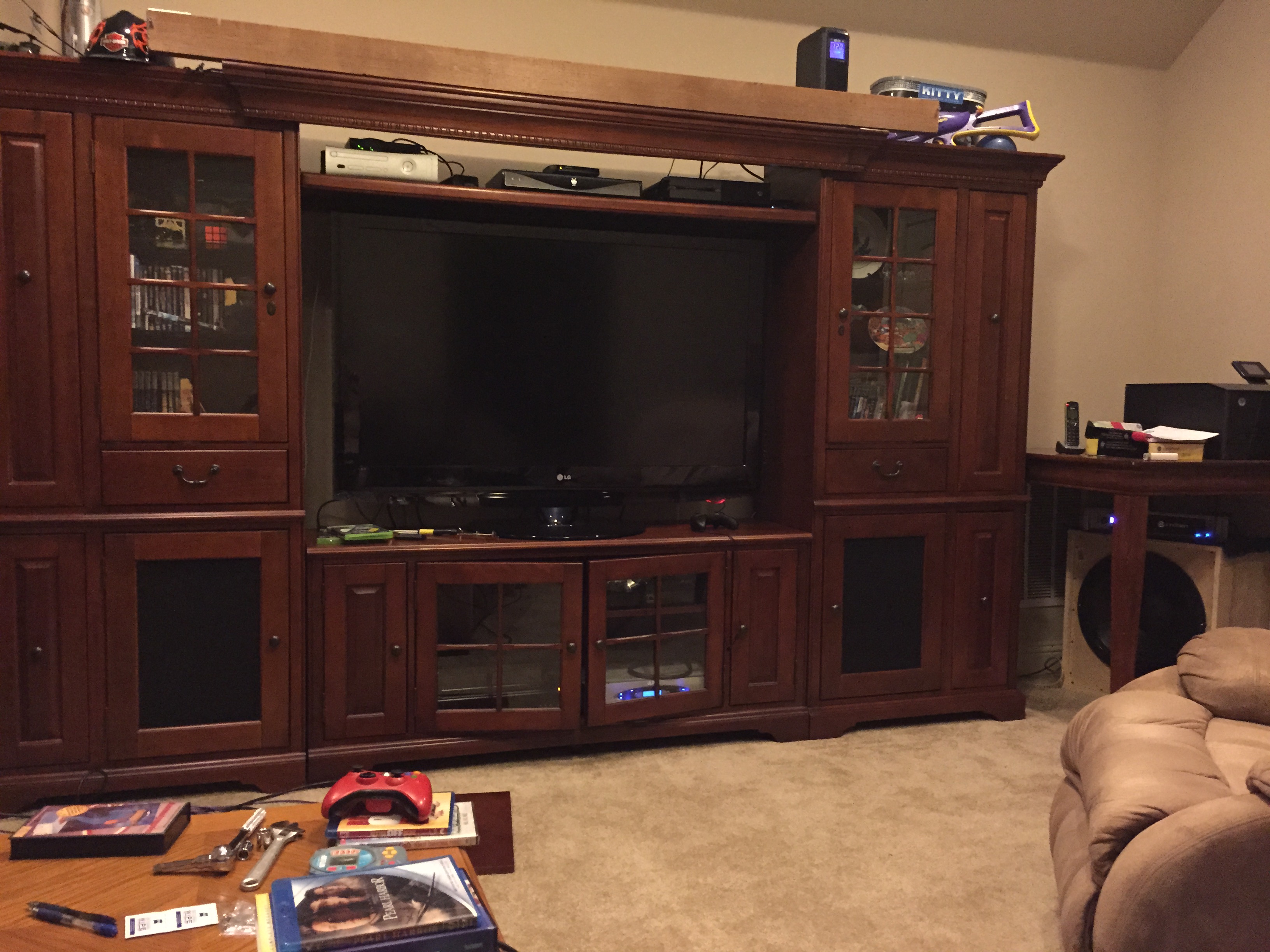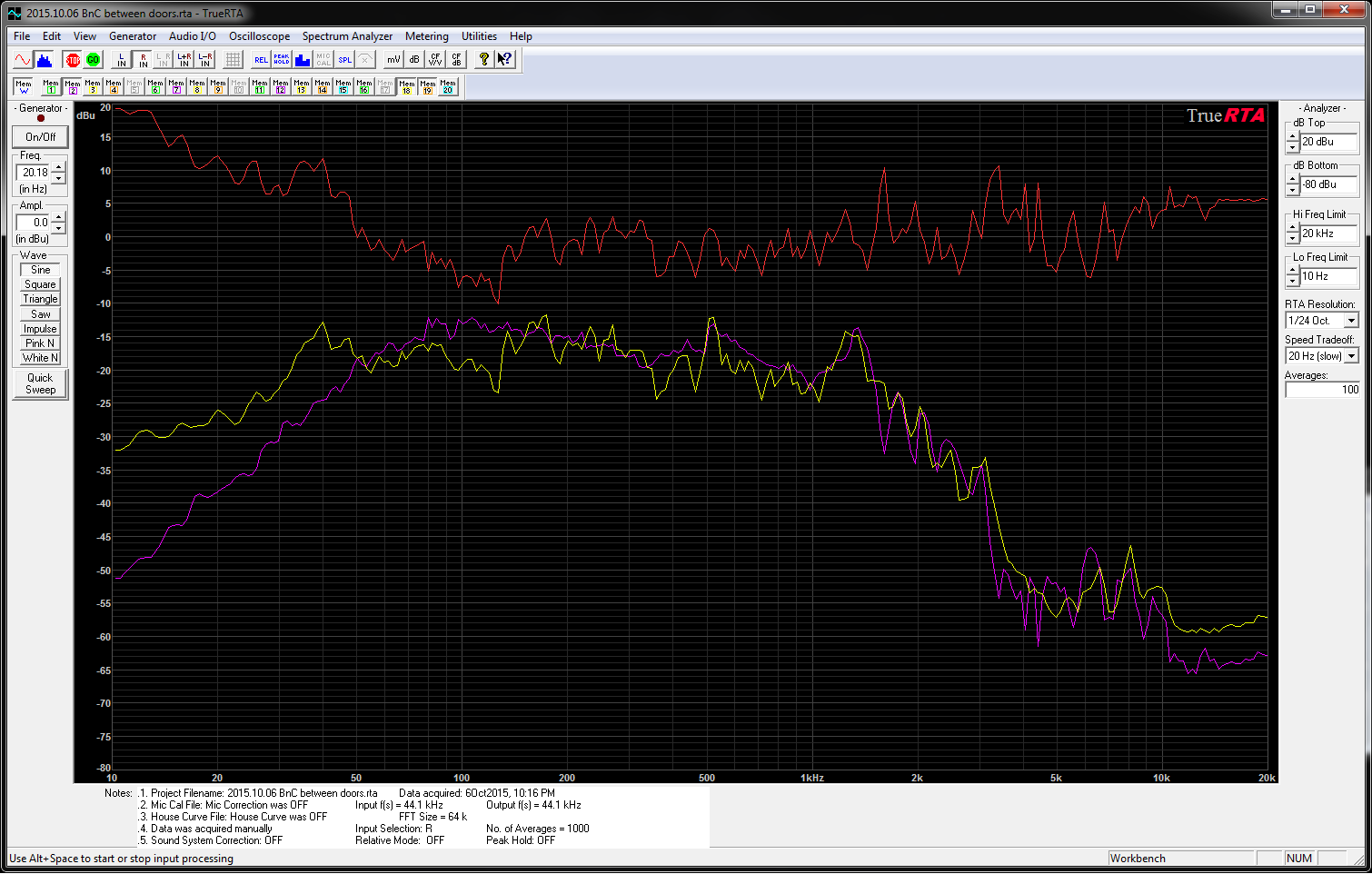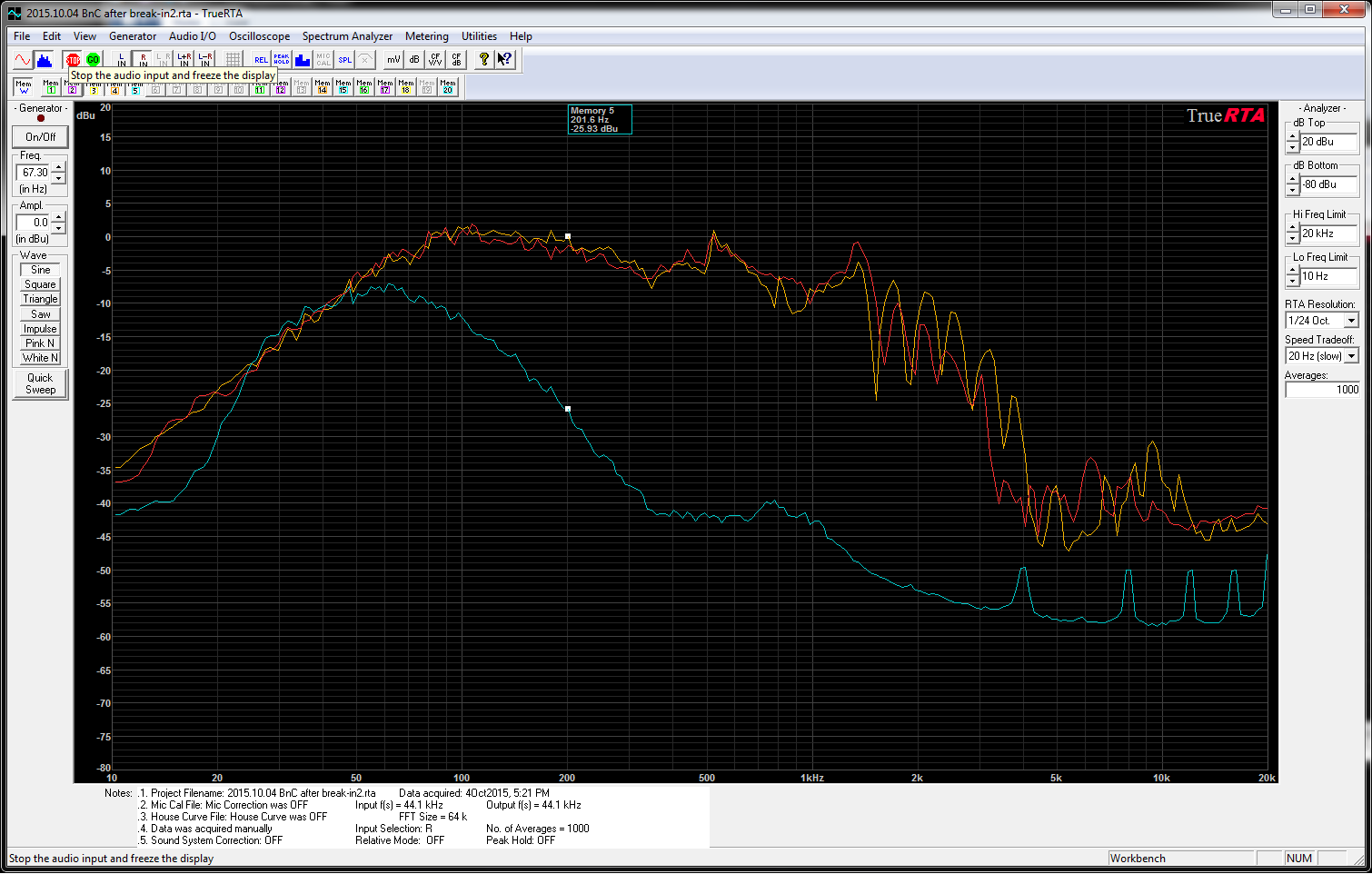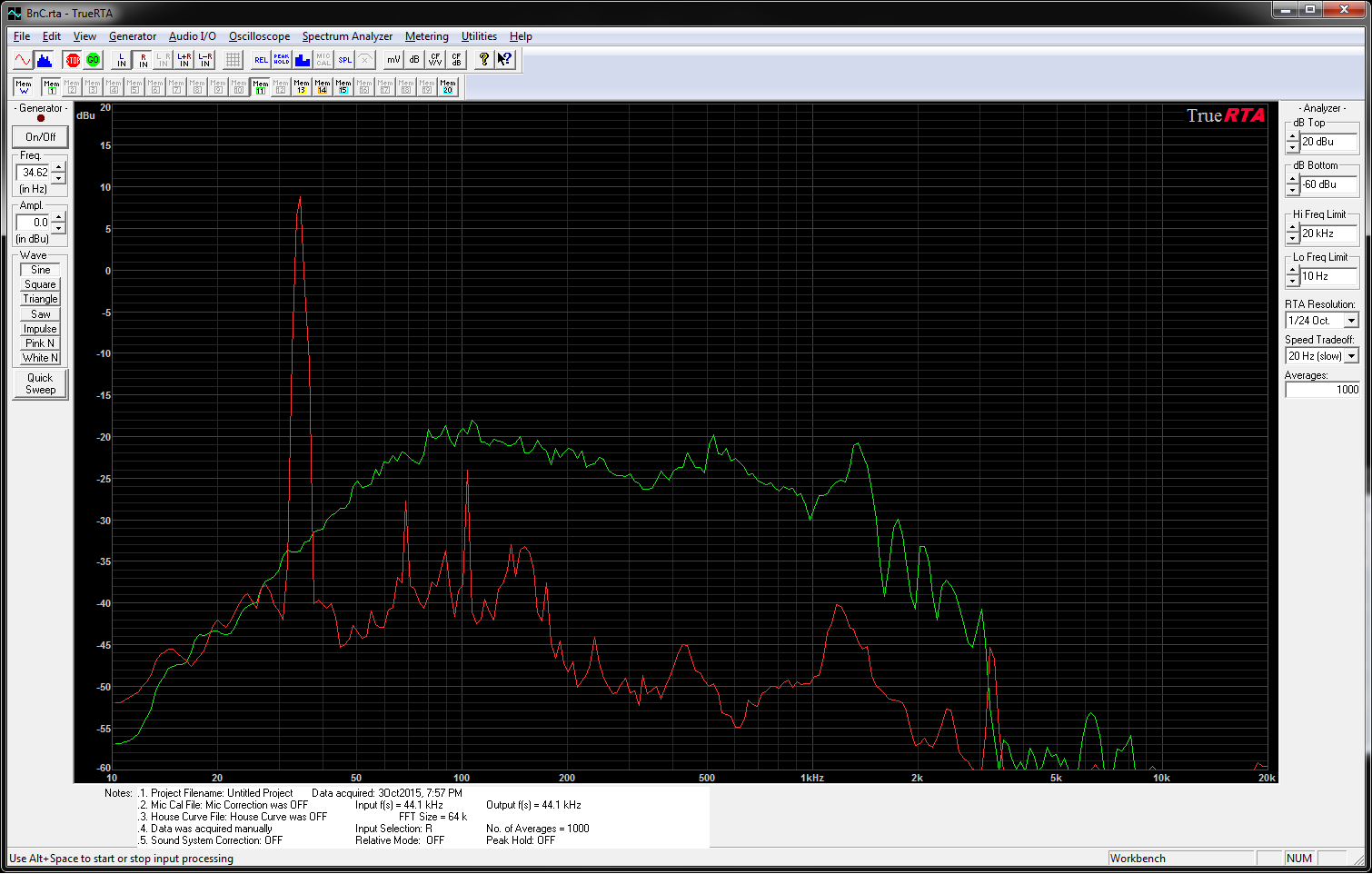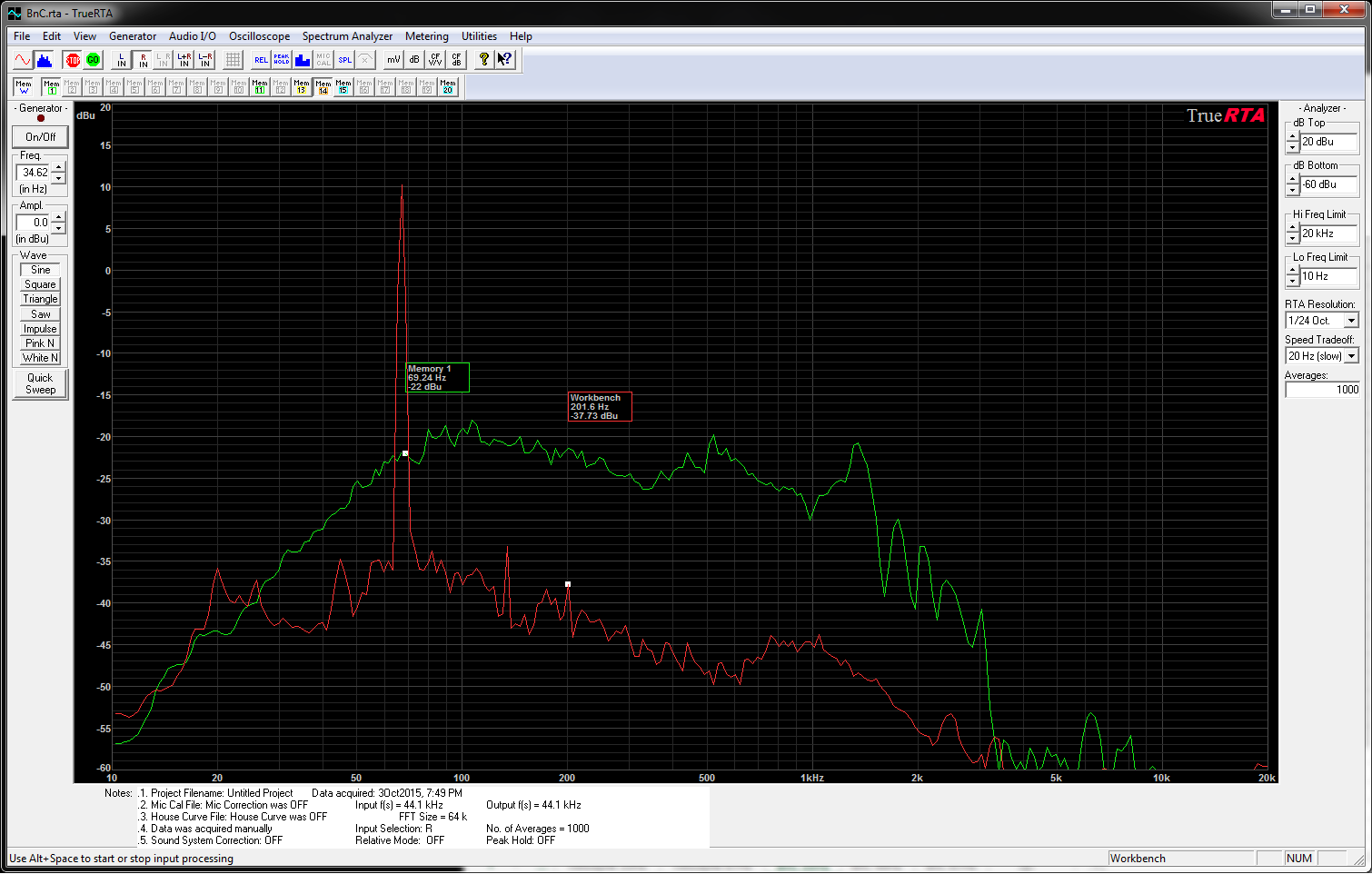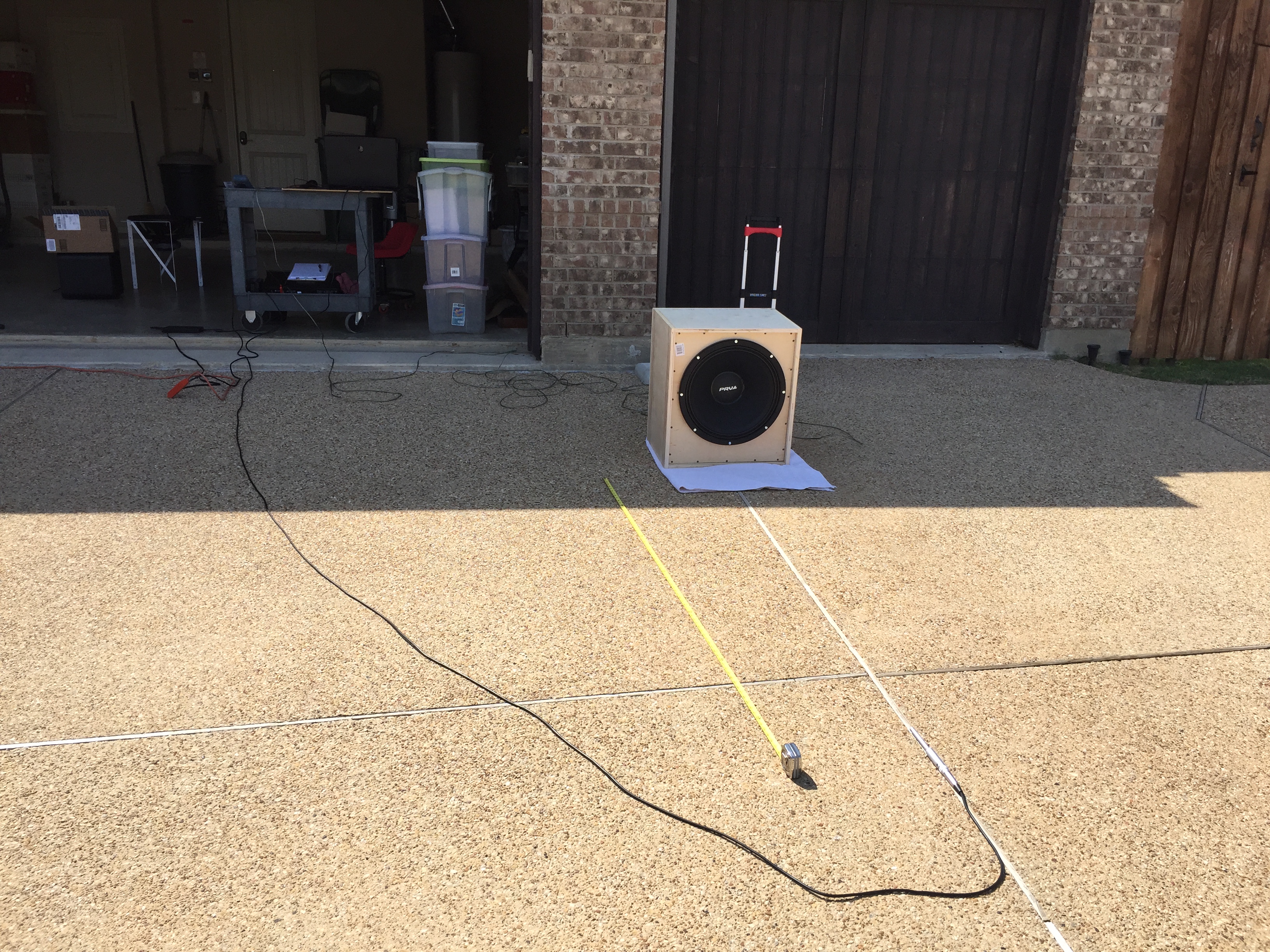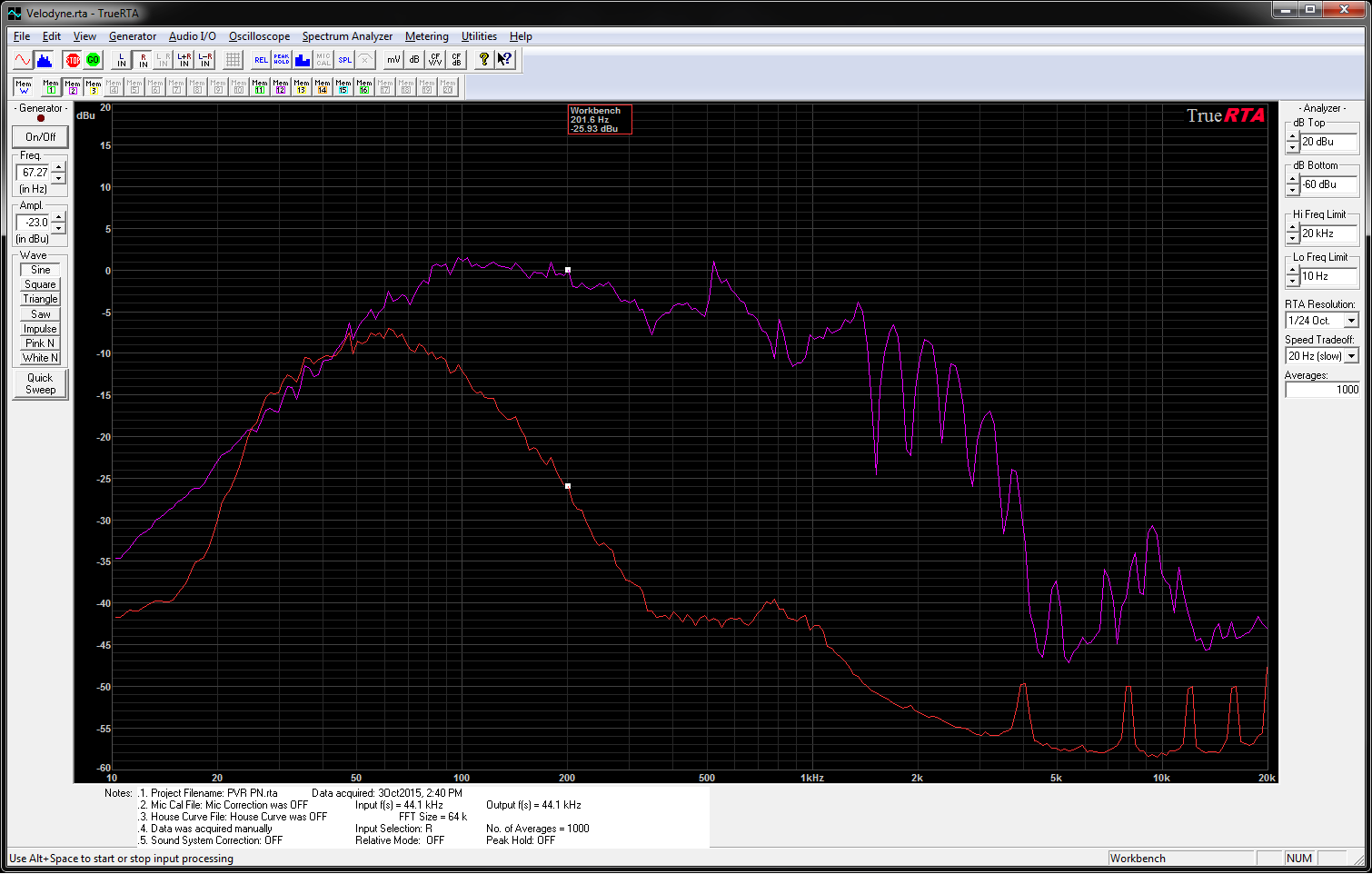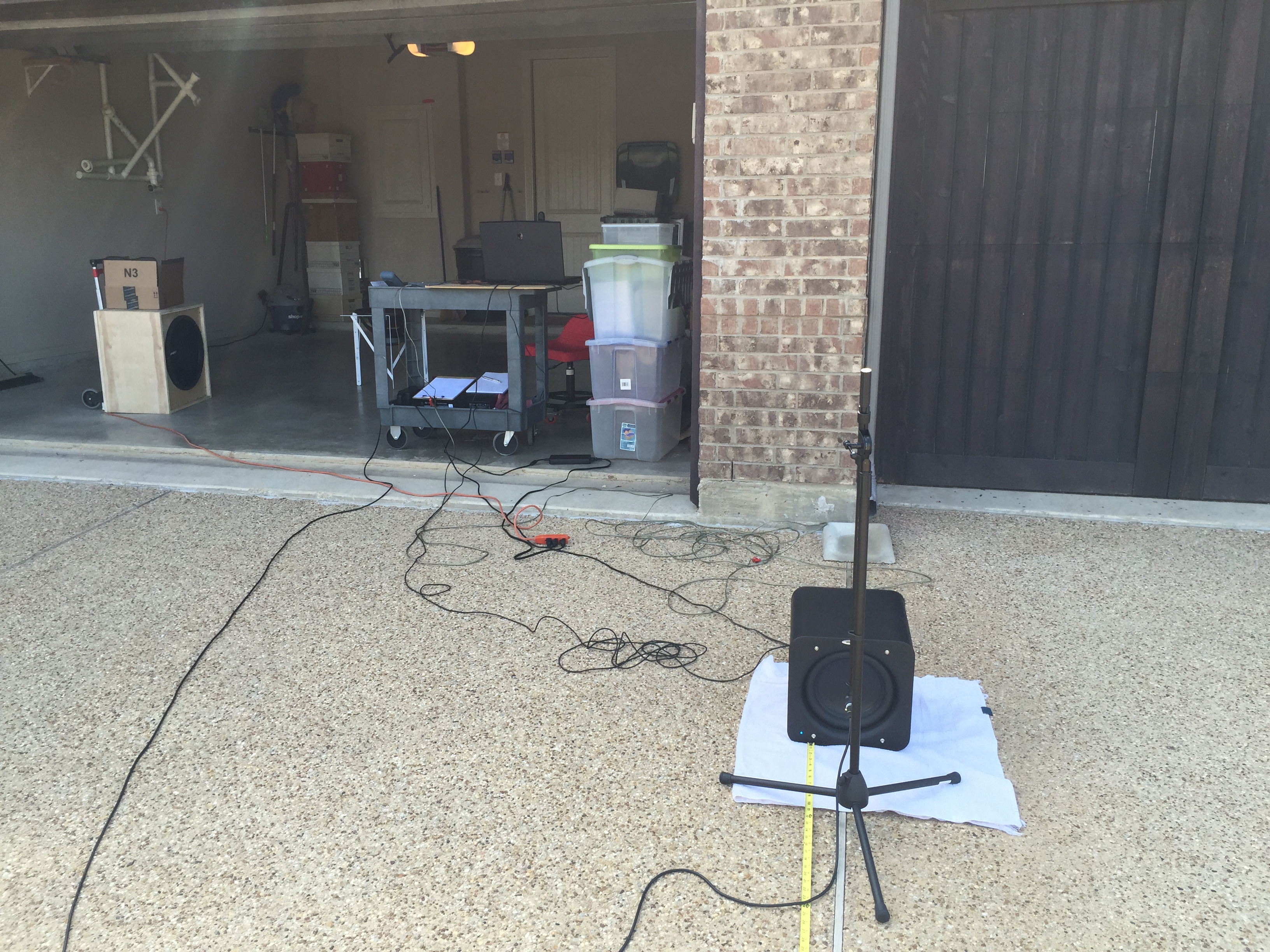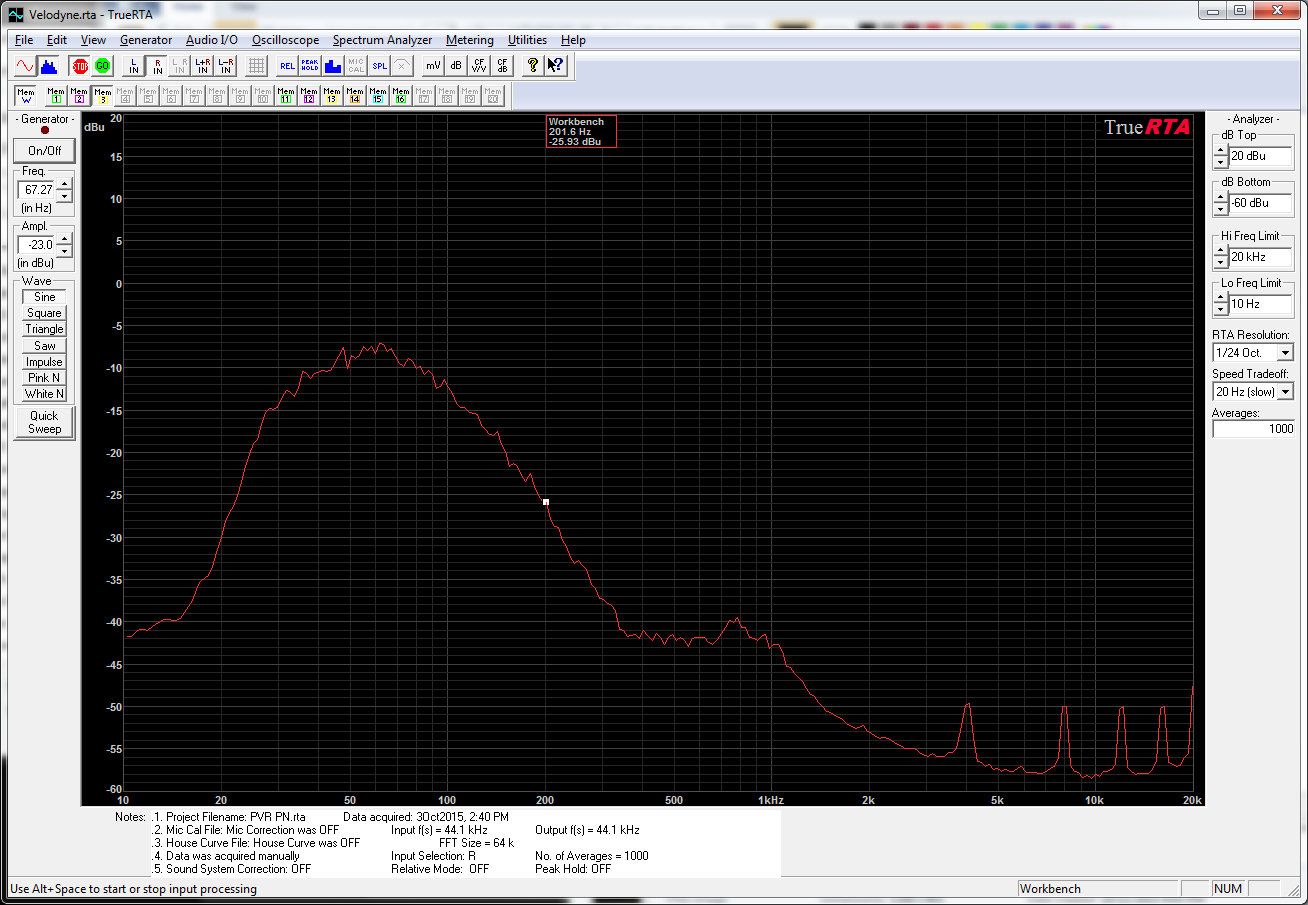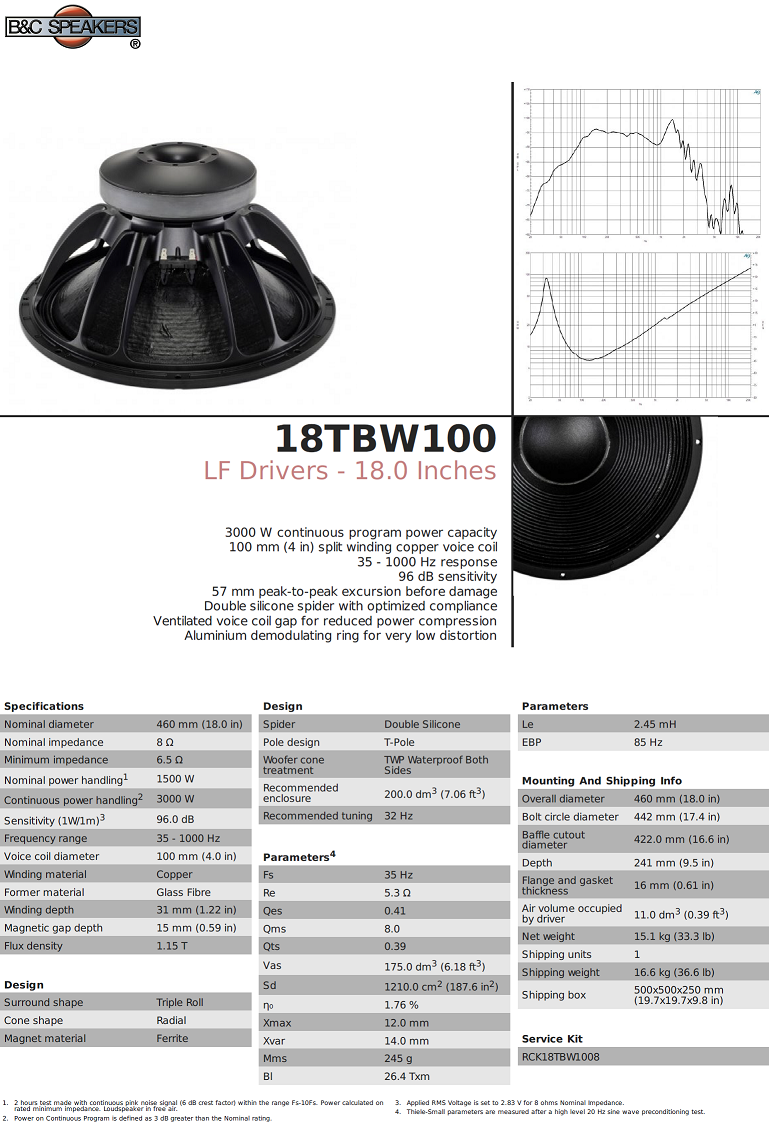A technique recommended for finding your optimum subwoofer position is to place the subwoofer in your primary listening position and go around the room and listen to various candidate subwoofer locations. Today I did such a test. Instead of listening, I used a microphone, of course.
The three curves above are smoothed with a 1/12 octave filter. The green curve is the raw sub measurement. It is obtained by placing the microphone very close to the driver cone so as to swamp out the influences of the room. The red curve is the left corner of the listening room, and the blue curve is the right corner (where the subwoofer was located in all previous tests). The left corner is next to a couch, while the right corner is open to the room.
Which to pick? A subwoofer in each location would be ideal. The peaks / dips would partially cancel. In the end, I selected the left corner. It is smoother above 100 Hz where the subwoofer needs to integrate with the main speakers.
How well did the reciprocity hold up? I moved the subwoofer from my primary listening position and into the corner. (Pause, catch breath, this thing is HEAVY.) The big dip at 70 Hz has filled in nicely, while the response above 150 Hz is rougher. Acceptable.
